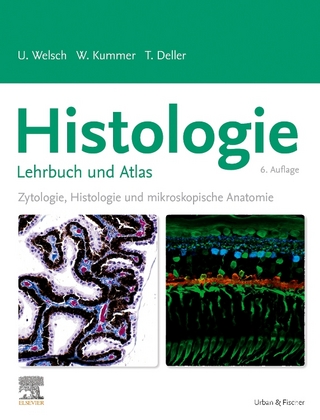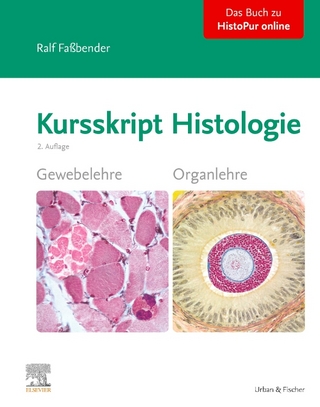
Quantitative Biology of Endocytosis
Morgan & Claypool Publishers (Verlag)
978-1-61504-786-4 (ISBN)
Clathrin-mediated endocytosis (CME) is a ubiquitous internalization process in eukaryotic cells. It consists of the formation of an approximately 50-nm diameter vesicle out of a flat membrane. Genetics, biochemistry, and microscopy experiments performed in the last four decades have been instrumental to discover and characterize major endocytic proteins in yeast and mammals. However, due to the highly dynamic nature of the endocytic assembly and its small size, many questions remain unresolved: how are endocytic proteins organized spatially and dynamically? How are forces produced and how are their directions controlled? How do the biochemical activities of endocytic proteins and the membrane shape and mechanics regulate each other? These questions are virtually impossible to visualize or measure directly with conventional approaches but thanks to new quantitative biology methods, it is now possible to infer the mechanisms of endocytosis in exquisite detail. This book introduces quantitative microscopy and mathematical modeling approaches that have been used to count the copy number of endocytic proteins, infer their localization with nanometer precision, and infer molecular and physical mechanisms that are involved in the robust formation of endocytic vesicles.
Julien Berro, Ph.D., is an assistant professor of Molecular Biophysics and Biochemistry, and of Cell Biology at Yale University. He initially trained in Physics, Applied Mathematics and Computer Sciences at the Institut National Polytechnique of Grenoble, France. He obtained his Ph.D. in Mathematical Modeling in Biology at Universite Joseph Fourier, Grenoble, France, where he worked with Jean-Louis Martiel and Laurent Blanchoin on mathematical models for actin filament biochemistry and mechanics. After a brief tenure as an assistant professor in the department of Mathematics at Universite Claude Bernard, Lyon, France, he decided to further his training by learning cell biology and quantitative microscopy in the laboratory of Tom Pollard at Yale University. Since he started his own laboratory in 2013, he has combined experimental, computational, and theoretical approaches to uncover the mechanisms of molecular machineries that produce forces in the cell, with a particular focus on the actin cytoskeleton and endocytosis. Michael M. Lacy, Ph.D., completed his dissertation research in the laboratory of Prof. Julien Berro at Yale University. He earned his B.S. degree in Biochemistry at Tufts University in 2012 and his Ph.D. in Molecular Biophysics and Biochemistry at Yale in 2018, and he is now a postdoctoral researcher in the Berro laboratory before he leaves to launch his career in scientific editing and communication. Mike began the first stage of his Ph.D. research in the laboratory of Prof. Elizabeth Rhoades where he studied intrinsically disordered proteins. Mike's research in the Berro laboratory has developed and used single-molecule fluorescence microscopy to study membrane remodeling, focusing on the actin cytoskeleton and endocytosis in yeast. Mike was an editor for the Yale Journal of Biology and Medicine from 2014 to 2018, and he has been a member of the Biophysical Society since 2013. In his spare time, he enjoys bicycling, playing softball, and homebrewing beer. Dr. Wallace F. Marshall is Professor of Biochemistry and Biophysics at the University of California San Francisco. Dr. Marshall's research focuses on understanding how the complex geometry of cells arises from the interplay of molecular and physical mechanisms, as well as how cell geometry relates to cell function. His lab has a particular interest in the mechanisms that control the size of organelles. Questions of cell geometry are inherently quantitative, and Dr. Marshall's group employs an integrated combination of quantitative microscopy, image analysis, and computational modeling, together with genetic and biochemical methods. Dr. Marshall received Bachelor degrees in Electrical Engineering and Biochemistry at the State University of New York, Stony Brook, and his Ph.D. in Biochemistry at the University of California San Francisco. After postdoctoral training at Yale University in the Molecular, Cellular, and Developmental Biology department, he returned to UCSF in 2003 to start his faculty position. He has been an organizer of the Cold Spring Harbor Computational Cell Biology conferences for the past three years and is currently co-director of the Physiology course at the Marine Biological Laboratory in Woods Hole, MA.
Abstract
1. Introduction to Clathrin-Mediated Endocytosis.
2. Collecting Quantitative Data
3. From Raw Images to Quantitative Measurements: Extracting, Correcting, and Aligning the Fluorescence Microscopy Data
4. Using Quantitative Microscopy Data to Infer the Molecular Mechanisms of Endocytosis
5. Perspectives and Future of Quantitative Biology of Endocytosis
References
Author Biographies
| Erscheinungsdatum | 27.08.2018 |
|---|---|
| Reihe/Serie | Colloquium Series on Quantitative Cell Biology |
| Mitarbeit |
Herausgeber (Serie): Wallace F. Marshall |
| Verlagsort | San Rafael |
| Sprache | englisch |
| Maße | 152 x 229 mm |
| Gewicht | 825 g |
| Themenwelt | Studium ► 1. Studienabschnitt (Vorklinik) ► Histologie / Embryologie |
| Naturwissenschaften ► Biologie ► Allgemeines / Lexika | |
| ISBN-10 | 1-61504-786-7 / 1615047867 |
| ISBN-13 | 978-1-61504-786-4 / 9781615047864 |
| Zustand | Neuware |
| Haben Sie eine Frage zum Produkt? |
aus dem Bereich


